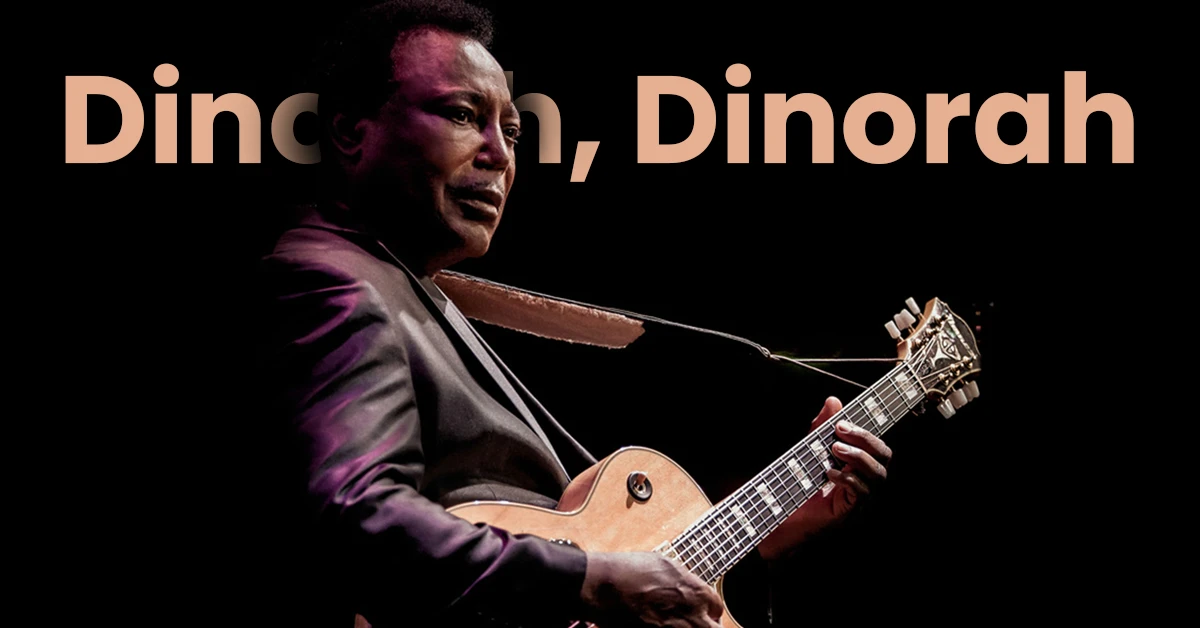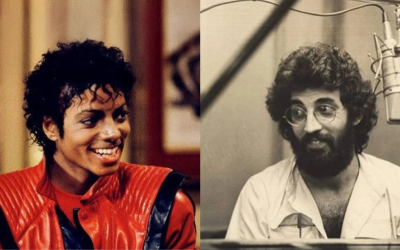The landscape of jazz has been profoundly enriched by the vibrant rhythms and sophisticated harmonies of Brazilian music. Among the most celebrated cross-cultural collaborations, the version of “Dinorah Dinorah” by George Benson stands out, particularly his iconic rendition of Ivan Lins’ masterpiece. This fusion not only showcased Benson’s unparalleled guitar virtuosity but also brought the genius of Brazilian composers like Ivan Lins to a global audience. This article delves into the story behind “Dinorah, Dinorah,” a pivotal track that exemplifies the seamless blend of Brazilian jazz fusion and the enduring legacy of a remarkable musical partnership.
The Architect of Fusion: Quincy Jones and Brazilian Talent
The bridge between Brazilian and American music was often built by visionary producers, and few were as influential as Quincy Jones. His discerning ear for global sounds and his deep appreciation for sophisticated songwriting led him to forge a crucial connection with Brazilian composers Ivan Lins and Vitor Martins. This partnership was more than a business deal; it was a deliberate effort to introduce the rich tapestry of Ivan Lins compositions to the American music scene.
Quincy’s contract with Lins and Martins, though for a limited duration, yielded extraordinary results. It opened doors for their music to be recorded by an elite roster of American artists, including Ella Fitzgerald, Sarah Vaughan, Barbra Streisand, and, significantly, George Benson. This strategic collaboration was instrumental in elevating Brazilian music to an international platform, proving its universal appeal and artistic depth.
The Quincy Jones collaborations represented a golden era where Brazilian sophistication met American production excellence. Jones understood that Brazilian music possessed an inherent complexity and emotional depth that could resonate with jazz audiences worldwide. His role as cultural ambassador was crucial in creating opportunities for Brazilian composers to reach beyond their national borders.
Dinorah, Dinorah: A Masterpiece of Rhythm and Melody
The centerpiece of this cross-cultural exchange, and the focus of Dinorah Dinorah George Benson‘s collaboration, is the exquisite composition “Dinorah, Dinorah.” Written by Ivan Lins and Vitor Martins, this song is a testament to their mastery of intricate melodies and compelling rhythmic structures. The composition showcases the sophisticated harmonic language that has made Ivan Lins compositions so revered among musicians and music lovers alike.
“Dinorah, Dinorah” exemplifies the best qualities of Brazilian popular music: complex yet accessible melodies, sophisticated harmonic progressions, and rhythmic patterns that invite both careful listening and physical movement. The song’s structure demonstrates the compositional maturity that Lins and Martins had achieved by the late 1970s, combining traditional Brazilian elements with contemporary jazz sensibilities.
The original composition features intricate chord changes that challenge performers while maintaining an irresistible melodic flow. This balance between technical sophistication and emotional accessibility is what makes the song so perfect for jazz interpretation—it provides a rich harmonic foundation for improvisation while never losing its essential Brazilian character.
George Benson’s Transformative Interpretation
George Benson’s instrumental rendition of “Dinorah, Dinorah” appeared on his seminal 1980 album, Give Me the Night, produced by Quincy Jones. This track perfectly encapsulates the essence of Brazilian jazz fusion. Benson’s signature warm, articulate guitar tone and his impeccable phrasing bring out the inherent joy and sophistication of the composition. The interplay between his improvisational flair and the song’s precise, syncopated rhythms creates a captivating listening experience.
What makes Dinorah Dinorah George Benson‘s version so special is how he approaches the Brazilian rhythmic elements. Rather than simply overlaying jazz improvisation onto Brazilian rhythms, Benson internalizes the song’s rhythmic DNA. His guitar lines breathe with the natural ebb and flow of Brazilian phrasing, demonstrating his deep understanding of the music’s cultural context.
The recording showcases Benson’s ability to balance technical virtuosity with emotional expression. His solo passages are masterful displays of melodic invention, while his rhythm playing provides a solid foundation that honors the song’s Brazilian roots. The production, under Jones’s meticulous direction, creates a lush soundscape that supports both the composition’s complexity and Benson’s interpretive genius.
The Album Context: Give Me the Night
The inclusion of “Dinorah, Dinorah” on Give Me the Night was strategically significant. The album represented a high point in Benson’s career, blending elements of jazz, R&B, and funk with international influences. Released in August 1980, the album achieved both commercial success and critical acclaim, topping multiple charts and earning Platinum certification from the RIAA.
At the 1981 Grammy Awards, the album’s excellence was recognized with multiple wins, including a Grammy Award for Best Instrumental Arrangement for “Dinorah, Dinorah,” awarded to Quincy Jones and Jerry Hey. This recognition highlighted the sophisticated arranging work that transformed the Brazilian composition into a jazz-funk masterpiece while maintaining its essential character.
The success of “Dinorah, Dinorah” on Give Me the Night was a landmark moment. It demonstrated how Ivan Lins compositions could seamlessly integrate into a mainstream jazz and R&B album, appealing to a broad audience while retaining their authentic Brazilian soul. The track’s intricate harmonic progressions and vibrant rhythmic patterns provided a perfect canvas for Benson’s virtuosic guitar work, solidifying its place as a favorite among jazz enthusiasts and a staple in Benson’s live performances.
Technical Analysis: The Magic in the Details
From a technical perspective, “Dinorah, Dinorah” operates in a complex rhythmic framework that challenges both performers and listeners. The song’s tempo, set at approximately 119 beats per minute, creates a groove that feels both relaxed and energetic. The harmonic progression features sophisticated jazz chords that move through unexpected but logical sequences, creating a sense of constant forward motion.
Benson’s guitar arrangement showcases his mastery of both single-note lines and chord voicings. His use of octaves, a signature element of his style, adds depth and richness to the melodic statements. The interplay between his lead guitar and the rhythm section creates a conversation that exemplifies the best qualities of Brazilian jazz fusion—where individual voices maintain their distinctiveness while contributing to a cohesive whole.
The production techniques employed on the track were groundbreaking for their time. The use of synthesizers and electronic elements enhanced the Brazilian percussion without overwhelming it, creating a modern sound that respected traditional elements. This balance between innovation and tradition became a template for future Quincy Jones collaborations with international artists.
Cultural Impact and Legacy
The impact of Dinorah Dinorah in George Benson‘s recording extended far beyond its immediate commercial success. It served as a powerful cultural ambassador, introducing the rich heritage of Brazilian music to listeners who might not have otherwise encountered it. This single track highlighted the universal appeal of Brazilian compositions, proving that their beauty transcended language and cultural barriers.
The recording also played a crucial role in opening doors for other Brazilian composers and musicians, demonstrating that there was a significant international market for sophisticated Brazilian music. It helped establish a template for how Brazilian jazz fusion could achieve commercial success while maintaining artistic integrity.
Contemporary artists continue to draw inspiration from this collaboration. The band Butcher Brown recently released their own interpretation of “Dinorah, Dinorah,” noting how Benson’s version felt “very Brazilian” and aiming to capture a “Southern Atlantic, laid-back beach party vibe” in their rendition. This ongoing influence demonstrates the timeless appeal of the original collaboration.
The Broader Context: Brazilian Music Goes Global
“Dinorah, Dinorah” represents a pivotal moment in the globalization of Brazilian music. During the late 1970s and early 1980s, Brazilian popular music was experiencing a renaissance, with composers like Ivan Lins creating works that combined traditional Brazilian elements with contemporary international influences.
The success of Ivan Lins compositions in the American market opened doors for other Brazilian artists and helped establish a framework for international collaboration that continues today. The sophisticated harmonic language and rhythmic complexity of Brazilian music proved to be perfectly suited for jazz interpretation, creating opportunities for cultural exchange that enriched both traditions.
This period also coincided with advances in recording technology and international distribution that made cross-cultural collaborations more feasible and profitable. The Quincy Jones collaborations with Brazilian artists became a model for how producers could successfully bridge different musical traditions while respecting their individual characteristics.
Enduring Influence and Modern Relevance
Today, “Dinorah, Dinorah” remains a beloved classic in both jazz and Brazilian music circles. Its influence can be heard in contemporary artists who continue to explore the intersection of Brazilian rhythms with jazz harmonies. The track stands as a testament to the power of cross-cultural musical collaboration and the universal language of sophisticated songwriting.
For musicians studying Brazilian jazz fusion, Benson’s interpretation of “Dinorah, Dinorah” provides a masterclass in how to approach Brazilian material with respect and creativity. His ability to honor the original composition while adding his own distinctive voice offers valuable lessons for any artist interested in cross-cultural musical exploration.
The recording also demonstrates the importance of having visionary producers like Quincy Jones who can recognize the potential for cultural fusion and create the conditions for successful collaboration. The legacy of this partnership continues to inspire new generations of musicians and producers to seek out opportunities for meaningful cultural exchange through music.
Conclusion: A Timeless Fusion
Dinorah Dinorah George Benson represents more than just a successful recording—it embodies the beautiful possibilities that emerge when talented artists from different cultures come together with mutual respect and shared artistic vision. The collaboration between Ivan Lins, Vitor Martins, Quincy Jones, and George Benson created something that honored all their traditions while pointing toward new possibilities for musical expression.
This track continues to serve as an inspiration for musicians worldwide, proving that authentic artistic collaboration can transcend cultural boundaries and create works of lasting beauty and significance. For those interested in exploring the deeper stories behind this remarkable collaboration and the broader context of Brazilian music’s international journey, our accompanying video provides additional insights into this fascinating chapter of musical history.
References
- The MISSING HIT on Michael Jackson’s Thriller? | Ivan Lins Untold Story. The Stringuy | YouTube Channel. https://youtu.be/Yms31ysXeQw
- George Benson – Give Me the Night Album Information. AllMusic. https://www.allmusic.com/album/give-me-the-night-mw0000196456
- Give Me the Night (album). Wikipedia. https://en.wikipedia.org/wiki/Give_Me_the_Night_%28album%29
- Butcher Brown Shares New Single ‘Dinorah Dinorah’. Broadway World. https://www.broadwayworld.com/bwwmusic/article/Butcher-Brown-Shares-New-Single-Dinorah-Dinorah-20250218
- Key, tempo & popularity of Dinorah, Dinorah By George Benson. Musicstax. https://musicstax.com/track/dinorah-dinorah/6vvIDcqj8Em8OiiRpqfMKe
- Ivan Lins Official Website. http://www.ivanlins.com.br (Used for general background on Ivan Lins’ career and compositions)
- Song: Dinorah, Dinorah written by Ivan Lins, Vitor Martins. SecondHandSongs. https://secondhandsongs.com/work/263386/all





